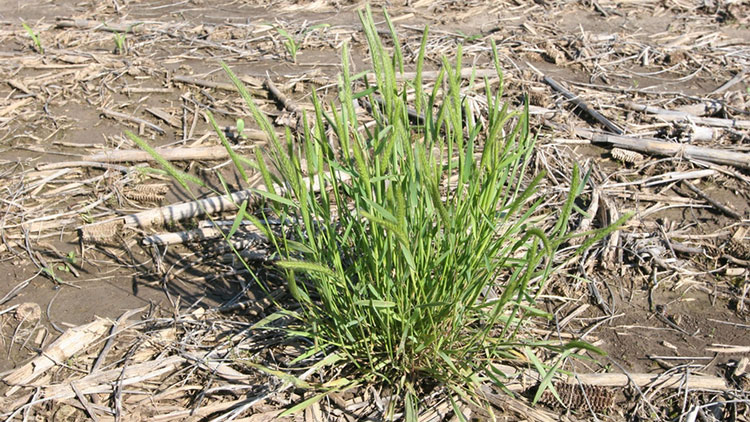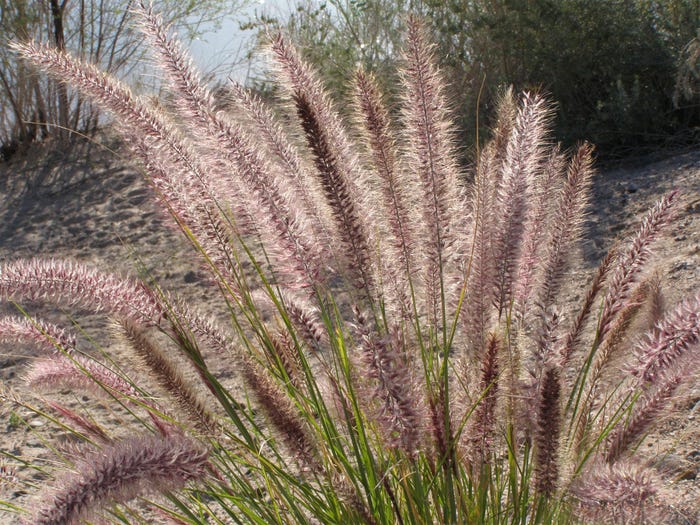
Weeds continue to pop up in crop and pasture fields, but three species are inundating more acres across Missouri.
Weed control is top of mind for both row crop and livestock farmers. Staying informed of the latest unwanted plants in the state can help determine management options.
At the MU Crop Management Conference in December, University of Missouri weed specialist Kevin Bradley shared three weeds farmers should pay attention to during the 2024 growing season:
1. Little barley. Last year’s No. 1 weed control question was around little barley, Bradley said. “It was especially a big topic in spring,” he noted. “This is not a new weed, but one I get more questions about over the past several years.”
Little barley is a small winter annual grass that appears like many small grains, complete with seed heads. It turns tan to brown in early spring when it matures.
Leaves alternate and are 1 to 5 inches long. The sheath is open, green and often hairless, loosely wrapping the stem. Its nodes are brown to purplish. It is a clumping grass.
2. Knotroot foxtail. During the late-summer months, farmers usually take notice of yellow foxtail in pastures, but there is another annual grass that may have you fooled. The knotroot foxtail looks very similar to the yellow foxtail, but it is a perennial grass that is short and has knotty roots that are rhizomes.
“It’s been a problem in the South for a much longer time,” Bradley said. “We might have more of a problem with this than I thought.”

LOOK CLOSE: This is not yellow foxtail, but rather a knotroot foxtail. Dig up its roots and find out just how it got its name — a knotty root system. (Photo courtesy of MU Extension)
Over the past few growing seasons, knotroot foxtail was confirmed in Bates, Cape Girardeau and Moniteau counties in Missouri. However, “Flora of Missouri” notes it is in about two-thirds of the state’s counties.
Bradley said there are limited herbicide options for control of knotroot foxtail. Glyphosate products can be used as a spot treatment, but any contact around the weed will also kill the legumes and grasses. He noted that mechanical removal of the entire plant, rootstock and all, offers control while protecting forage.
3. Chinese fountain grass. This is not a new weed for the state, with reports as early as 2018, but Bradley said it “keeps getting worse.” Today, there are 10 Missouri counties with Chinese fountain grass, and he said that number keeps climbing.
This is not the typical fountain grass sold at landscape retailers, known as the purple leaf variety. The Chinese fountain grass has green leaves and a purple seed head, and it can take over a pasture.
“I don't think we will see too much trouble with it in crops,” Bradley added, “but we have seen it spread to a lot of other areas.”

ORNAMENTAL ESCAPE: Chinese fountain grass continues to spread in pastures across Missouri. Homeowners once used it to adorn landscapes, but now it has found its way into agriculture. (Bonnie Million, Bureau of Land Management, Bugwood.org)
There's little nutritional value as a forage with Chinese fountain grass, Bradley said. MU data shows crude protein at 6.5% and total digestible nutrients at 63.3%.
This weed is tough to control as there are no chemical products that work selectively for Chinese fountain grass in pastures. Right now, farmers only options are to spot-spray or killed the old stands.
“I don't know how successful [starting over] is going to be because the seed is in the soil,” Bradley added. “You're just going to have more come up from there.”
For a comprehensive list of weeds in Missouri, visit MU Division of Plant Sciences Weed ID Guide.
About the Author(s)
You May Also Like






